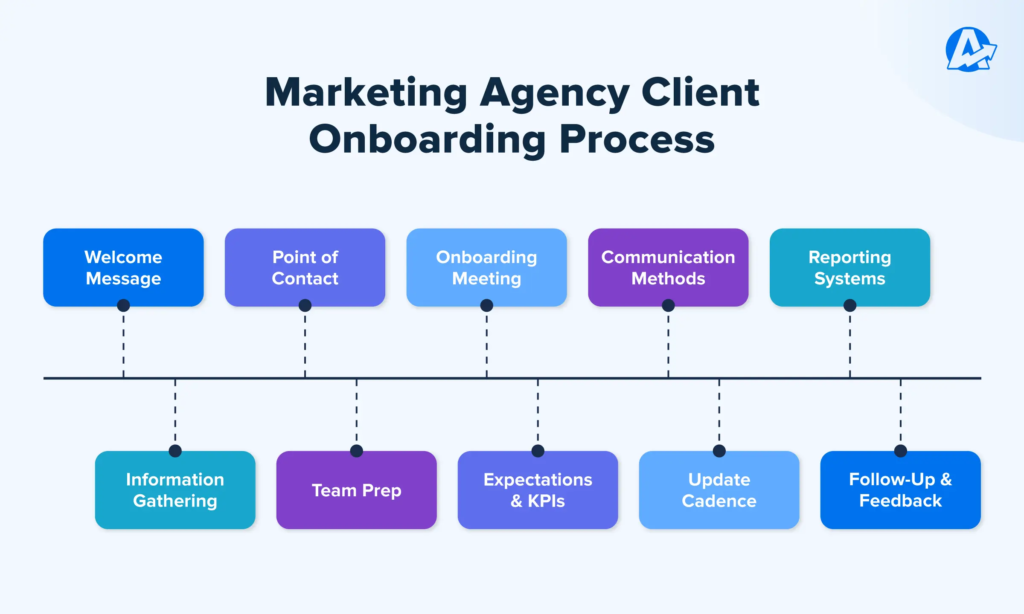In the dynamic world of digital marketing, social media onboarding stands as a pivotal process for agencies and managers alike. At Snaptastick Media, we’ve identified common hurdles that social media managers encounter during this phase and have developed strategies to overcome them effectively.
1. The Initial Hurdle: Understanding Client Expectations
One of the primary challenges in social media onboarding is aligning with client expectations. Clients often have varied understandings of what social media management entails, leading to potential mismatches in goals and deliverables.
Solution:
Initiate the onboarding process with a comprehensive questionnaire that delves into the client’s objectives, target audience, and brand voice. This proactive approach ensures clarity and sets a solid foundation for the partnership. 
2. Access and Permissions: The Technical Tango
Gaining access to a client’s social media accounts can be a logistical challenge during social media onboarding. Delays in receiving necessary permissions can stall the entire process.
Solution:
Provide clients with a detailed guide outlining the steps to grant access to their accounts. Utilizing tools like LastPass or secure shared documents can streamline this process and ensure security.

3. Content Creation: Striking the Right Chord
Crafting content that resonates with the client’s audience is crucial in social media onboarding. Misalignment in tone or messaging can hinder engagement and brand consistency. 
Solution:
Develop a content calendar in collaboration with the client, incorporating their feedback and preferences. Regular check-ins and approvals ensure the content remains on-brand and effective.
4. Setting Realistic Timelines: Managing Expectations
Clients may anticipate immediate results post-onboarding, which can be unrealistic. Managing these expectations is a critical aspect of social media onboarding.
Solution:
Communicate clear timelines for strategy development, content creation, and expected outcomes. Transparency fosters trust and sets achievable benchmarks for success.
5. Performance Metrics: Defining Success
Determining which metrics to track can be a point of contention during social media onboarding. Clients may focus on vanity metrics, overlooking more meaningful indicators of success.
Solution:
Educate clients on key performance indicators (KPIs) that align with their business goals. Regular reporting and analysis help in demonstrating value and adjusting strategies as needed.
6. Communication: Building a Collaborative Relationship
Effective communication is the backbone of successful social media onboarding. Misunderstandings or lack of updates can erode client confidence.
Solution:
Establish regular communication channels, such as weekly updates or monthly meetings. Utilizing project management tools can also enhance transparency and collaboration.
7. Adapting to Client Feedback: Flexibility is Key
Clients may request changes or have evolving needs during the social media onboarding process. Being adaptable while maintaining strategic direction is essential.
Solution:
Create a feedback loop that allows for client input while guiding them with data-driven insights. This balance ensures the strategy remains effective and client-centric.

8. Training and Empowerment: Educating the Client
Clients may lack understanding of social media platforms and best practices, posing a challenge in social media onboarding.
Solution:
Offer training sessions or resource materials to educate clients on platform functionalities and content strategies. Empowering clients fosters a collaborative environment and enhances the partnership.
9. Legalities and Agreements: Setting Boundaries
Clarifying the scope of work and legal responsibilities is a crucial step in social media onboarding. Ambiguities can lead to disputes or unmet expectations.
Solution:
Draft detailed contracts outlining services, deliverables, timelines, and confidentiality clauses. Having clear agreements protects both parties and sets professional standards.
10. Continuous Improvement: Evolving with the Client
The digital landscape is ever-changing, and strategies need to adapt accordingly. Ongoing evaluation is a vital component of social media onboarding.
Solution:
Regularly assess the effectiveness of social media strategies and be open to innovation. Staying updated with trends and platform changes ensures the client’s social media presence remains relevant and impactful.
Conclusion
Social media onboarding is a multifaceted process that requires attention to detail, clear communication, and adaptability. By addressing common challenges proactively, social media managers can establish strong client relationships and drive successful outcomes. At Snaptastick Media, we believe that a structured and client-focused onboarding process is the key to long-term success in the digital marketing realm.
